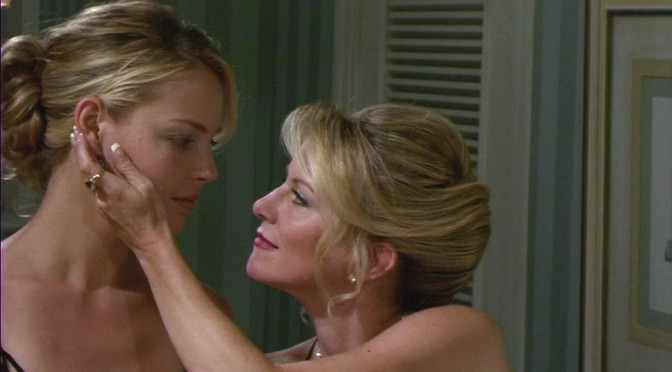For those of you who have not seen the 2005 low-budget indie film Side Effects starring Katherine Heigl, I recommend watching it. It is not because the film is great – it actually has a lot of shortcomings – but it definitely is interesting, especially for filmmakers looking to learn from others what to do and what not to do.
First of all, I want to say that I have a great amount of admiration for the people who created this film, especially the writer and director Kathleen Slattery-Moschkau (who, as you’ll see below, wore many other hats). She wrote a very interesting script and – despite being a filmmaking novice and a total Hollywood outsider – brought Katherine Heigl into the project. She persevered through many daunting obstacles, like securing financing for the film, shooting on a very short schedule with limited resources, and even self-distributing the film. She is really an inspiring person.
You can read more about the travails of this project in this excellent interview with Slattery-Moschkau.
As a quick sum-up, the writer-director dropped her literary agent rather than compromise her script, ruining her chances of a studio deal. So, she went out and found investors on her own – she secured $190,000. She teamed up with an LA-based entertainment lawyer, a producer and a casting director. The last of them had a working relationship with Heigl, which gave Slattery-Moschkau a chance to pitch the project to the emerging star – Heigl just completed her first season on “Grey’s Anatomy”. Heigl was intrigued by the script and the role and said yes.
Limited by the budget, the film was shot in only sixteen days and on the Panasonic AG-DVX100 – a consumer-level digital MiniDV camera. You can learn more about the camera in this Wikipedia article.
The film had a successful film festival tour but did not find theatrical distribution. Wary of funny accounting of home video distributors, Slattery-Moschkau decided to handle herself even the DVD distribution. She released the film in 2008. To buy or rent, check out the link below.
As I mentioned earlier, we can learn a lot from Kathleen Slattery-Moschkau – she had so many reasons, opportunities to throw in the towel, yet she made her passion project come true. But the film also serves as a great learning opportunity because of its mistakes. Of course, it is easy to see mistakes in hindsight, but that’s what learning is about.
The biggest surprise is the choice of a digital MiniDV camera – the Panasonic AG-DVX100. Yes, a budget of $190,000 is small… but only if you make films the Hollywood way.
It seems that the filmmakers of Side Effects did a lot of things the “proper” way – got a lawyer, producer, casting director, a budding star and everybody got paid decently. Unfortunately, they also made a compromise where it was the most visible for the audience – in the cinematography.
Shooting on the DVX100 wasn’t automatically a mistake. After all, there were others in 2005 who were getting good results with this camera, especially when combined with 35mm adapters (whether self-made or manufactured, like the Redrock Micro35). But also entrusting this camera to a director of photography lacking the experience with it was almost catastrophic.
Another major letdown was the casting, despite using an experienced casting director. Katherine Heigl was outstanding, but almost everyone else subpar. Seeing this great contrast in performance, you get a better appreciation of what a talented actor brings to a film.
There are other smaller problems with the film – due to the budget limitations, but also the lack of experience of the filmmakers. Still, the film has an interesting subject matter and a fun and honest way of dealing with it. Combined with the amazing performance by Katherine Heigl, it had enough to keep me interested to the end.
The main point I want to leave you with is that on all film productions you will have to make compromises. The key is to never make your audience aware of them.
And if you can’t find a way to do this, you just might have to shelve your project indefinitely and focus on another one. After all, what is a good story worth, if it is not told well.
I know that very well because I made a similar mistake on one of my earlier projects, but that is for another post.

